Camptonite
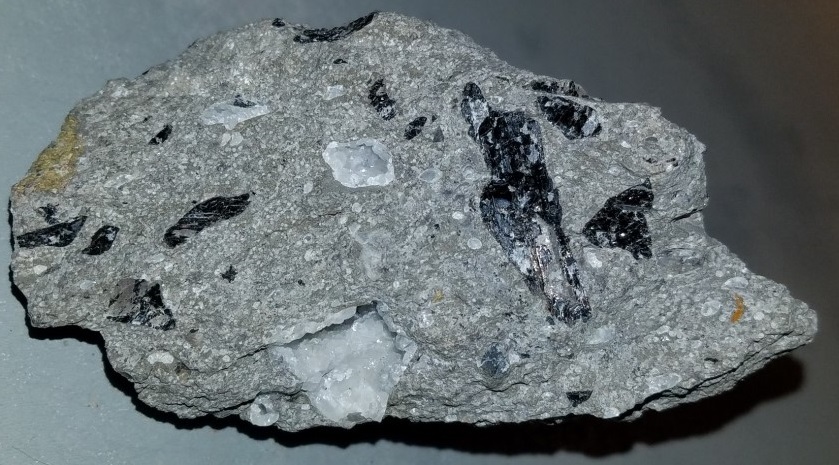
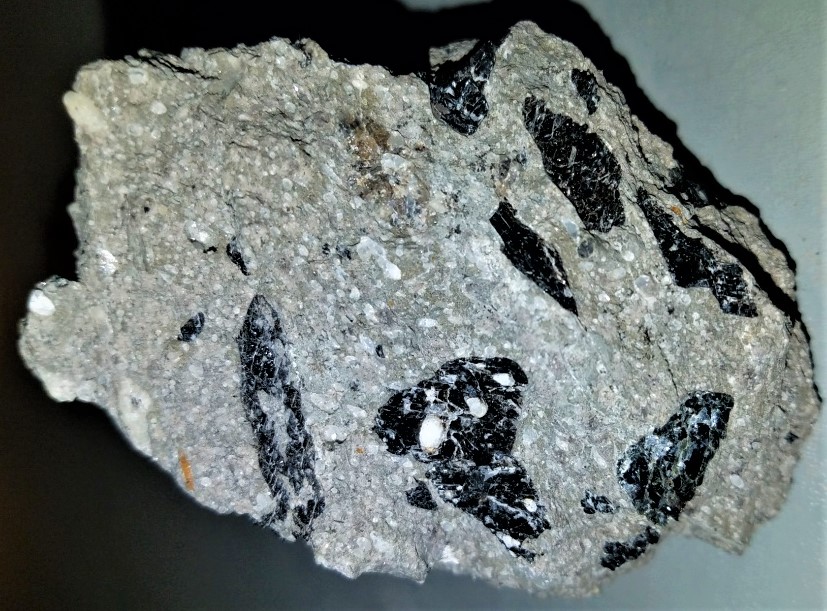
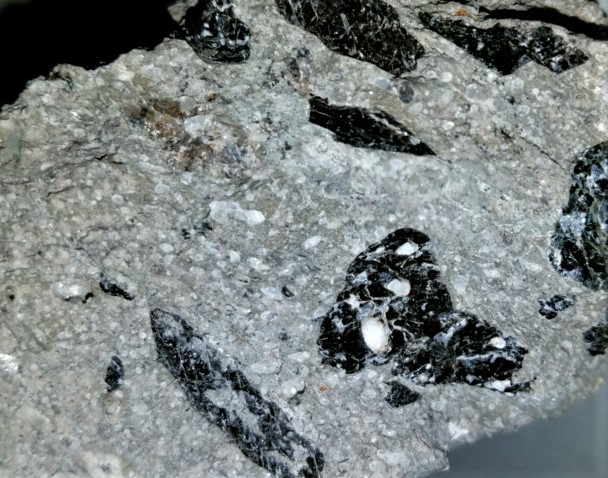

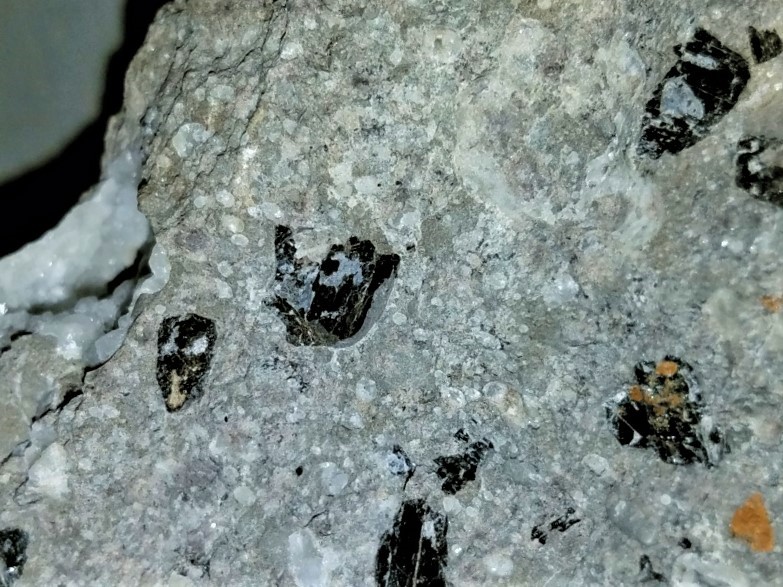
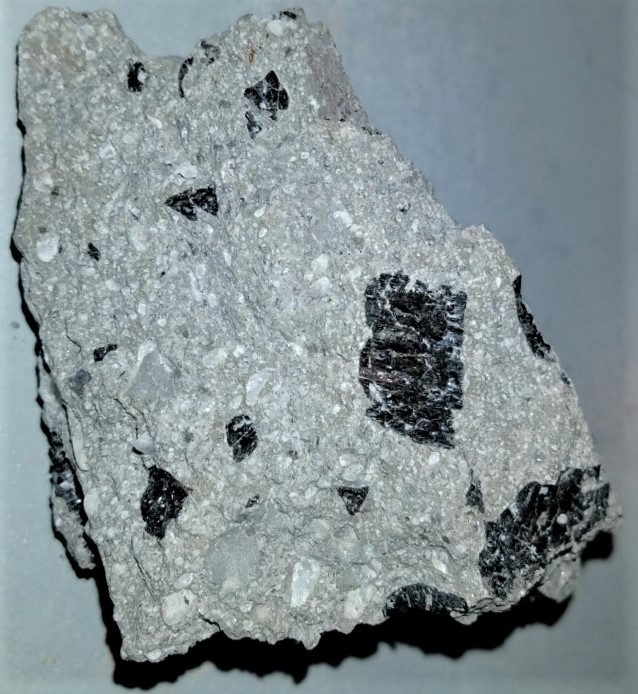
Photographed by Michael P. Klimetz
[With Kaersutite Phenocrysts]
Route 93 Roadcut
8 miles South of Hoover Dam
Minnesota District
Mohave County
ARIZONA
Camptonite is a magmatic dike rock consisting of plagioclase (usually labradorite) and brown amphibole (such as kaersutite). It also contains pyroxene (titanaugite), biotite, and olivine. All varieties (amphibole camptonite, biotite camptonite, and others) usually contain a good deal of secondary calcite and zeolite, which either fill amygdules or form irregular secretions. Diorite and camptonite are similar mineralogically, but differ texturally. Camptonites have large (up to 30 mm) phenocrysts of euhedral hornblende and altered diopsidic augite with minor phenocrysts (5 mm) of plagioclase (An 0-45). It has a groundmass of plagioclase laths, interstitial chlorite, magnetite, minor orthoclase, and apatite. Near Boulder Dam, camptonite dikes of possible Quaternary age are exposed. They are characterized by amphibole (kaersutite) phenocrysts of exceptional size and unusual distribution, a distribution which suggests that these phenocrysts have formed essentially in place.
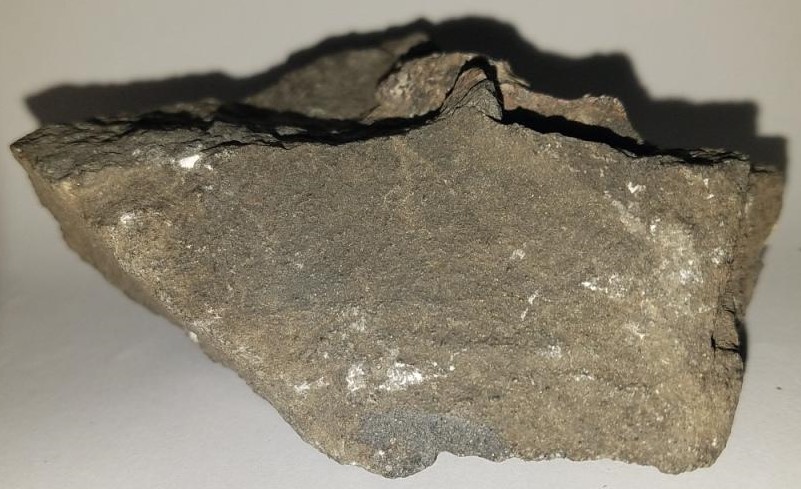
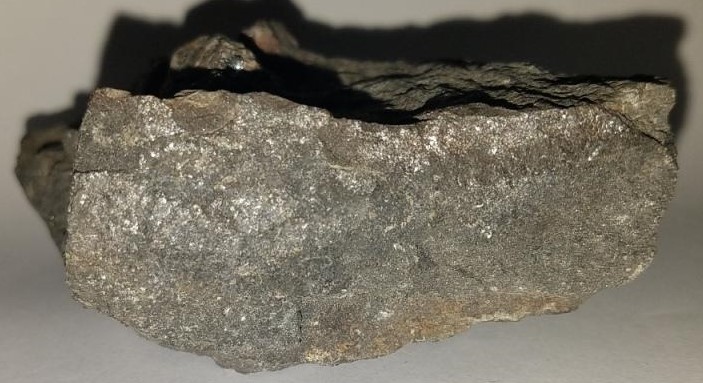
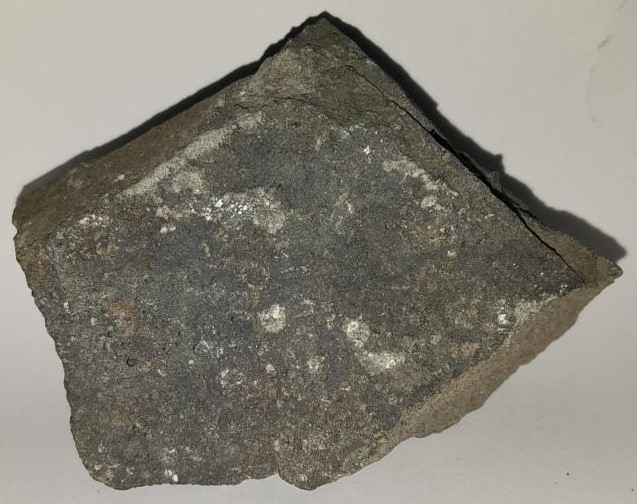
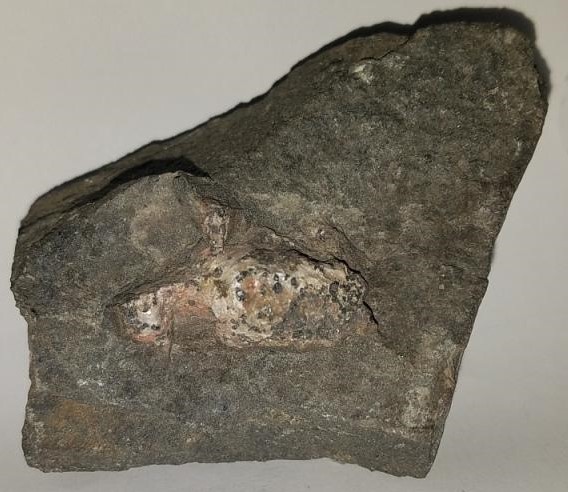
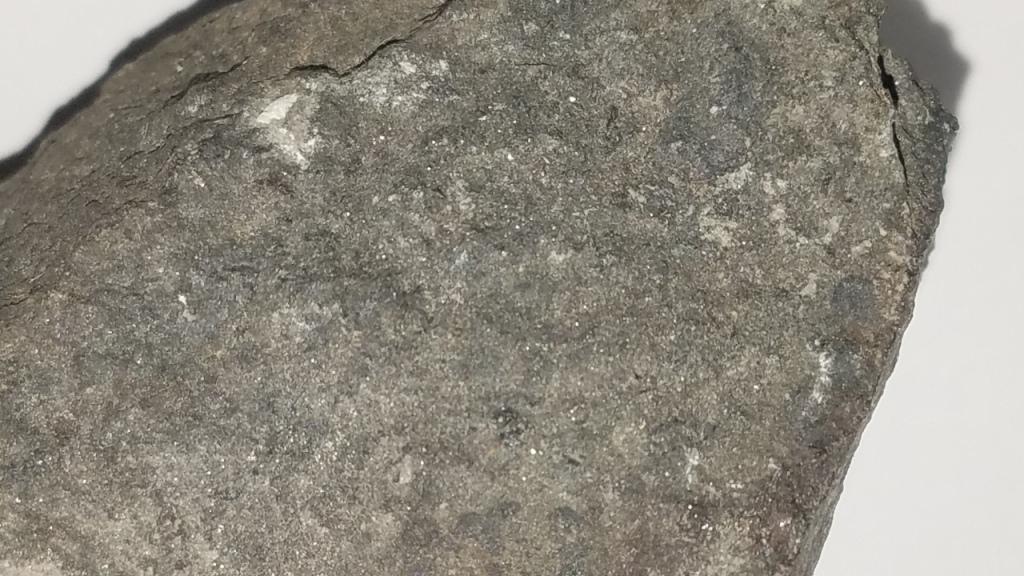
Photographed by Michael P. Klimetz
[Variety of Lamprophyre with Franklinite-Willemite-Calcite Xenolith]
Franklin Mine
Franklin
Sussex County
NEW JERSEY
Photographed by Michael P. Klimetz
[Variety of Lamprophyre with Franklinite-Willemite-Calcite Xenolith]
Franklin Mine
Franklin
Sussex County
NEW JERSEY
Photographed by Michael P. Klimetz
[Variety of Lamprophyre with Franklinite-Willemite-Calcite Xenolith]
Franklin Mine
Franklin
Sussex County
NEW JERSEY
Photographed by Michael P. Klimetz
[Variety of Lamprophyre with Franklinite-Willemite-Calcite Xenolith]
Franklin Mine
Franklin
Sussex County
NEW JERSEY
Photographed by Michael P. Klimetz
[Variety of Lamprophyre with Franklinite-Willemite-Calcite Xenolith]
Franklin Mine
Franklin
Sussex County
NEW JERSEY